Spatial, transcriptomic, and epigenomic analyses link dorsal horn neurons to chronic pain genetic predisposition
- PMID: 39453813
- PMCID: PMC11801220
- DOI: 10.1016/j.celrep.2024.114876
Spatial, transcriptomic, and epigenomic analyses link dorsal horn neurons to chronic pain genetic predisposition
Abstract
Key mechanisms underlying chronic pain occur within the dorsal horn. Genome-wide association studies (GWASs) have identified genetic variants predisposed to chronic pain. However, most of these variants lie within regulatory non-coding regions that have not been linked to spinal cord biology. Here, we take a multi-species approach to determine whether chronic pain variants impact the regulatory genomics of dorsal horn neurons. First, we generate a large rhesus macaque single-nucleus RNA sequencing (snRNA-seq) atlas and integrate it with available human and mouse datasets to produce a single unified, species-conserved atlas of neuron subtypes. Cellular-resolution spatial transcriptomics in mouse shows the precise laminar location of these neuron subtypes, consistent with our analysis of neuron-subtype-selective markers in macaque. Using this cross-species framework, we generate a mouse single-nucleus open chromatin atlas of regulatory elements that shows strong and selective relationships between the neuron-subtype-specific chromatin regions and variants from major chronic pain GWASs.
Keywords: CP: Neuroscience; GWAS; cell types; chronic pain; human; mouse; multiplexed in situ hybridization; rhesus macaque; single-nucleus ATAC-seq; single-nucleus RNA sequencing; spatial transcriptomics; spinal cord; variants.
Copyright © 2024 The Author(s). Published by Elsevier Inc. All rights reserved.
Conflict of interest statement
Declaration of interests A.R.P. is the founder of Snail Biosciences, Inc.
Figures
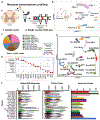
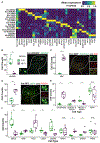
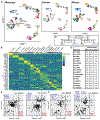
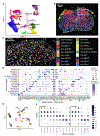
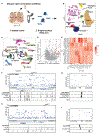

References
-
- Al-Chaer ED, Feng Y, and Willis WD (1999). Comparative Study of Viscerosomatic Input Onto Postsynaptic Dorsal Column and Spinothalamic Tract Neurons in the Primate. J. Neurophysiol 82, 1876–1882. - PubMed
-
- Christensen BN, and Perl ER (1970). Spinal neurons specifically excited by noxious or thermal stimuli: marginal zone of the dorsal horn. J. Neurophysiol 33, 293–307. - PubMed
Publication types
MeSH terms
Substances
Associated data
- Actions
Grants and funding
LinkOut - more resources
Full Text Sources
Medical
Molecular Biology Databases
Miscellaneous

